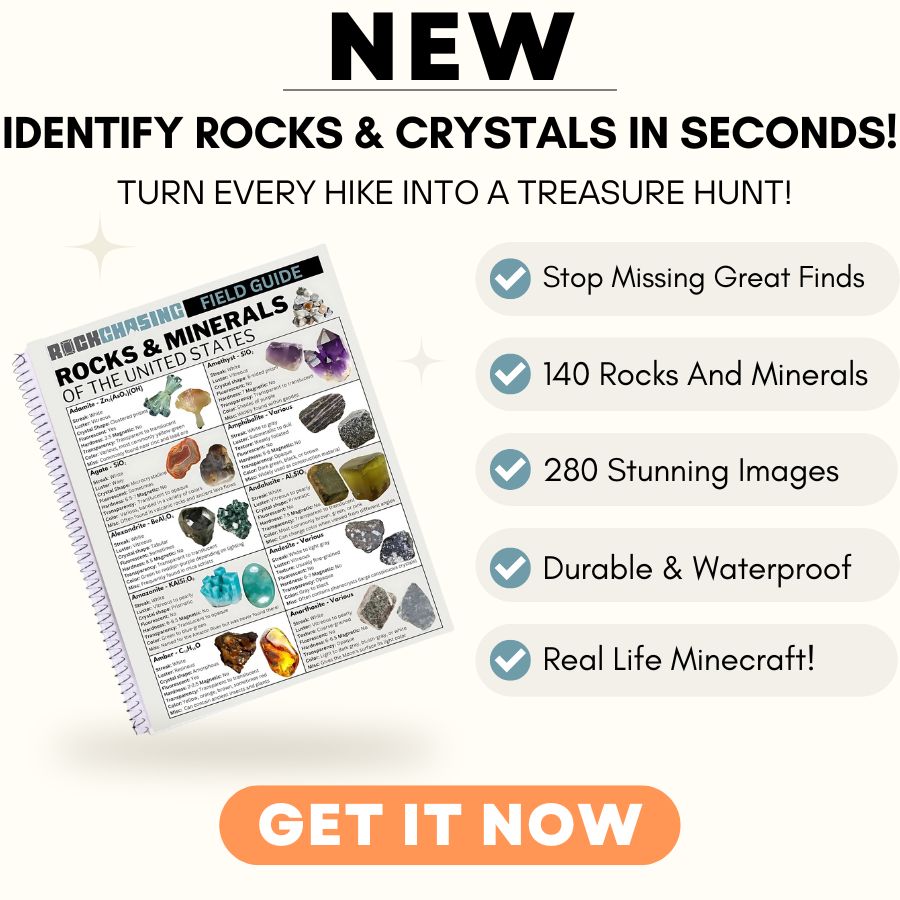From the Arctic Ocean to Canada’s Yukon Territory, from the Gulf of Alaska to the Chukchi Sea, Alaska’s vast landscape holds hidden treasures.
But searching for petrified wood can be frustrating and time-consuming. Where should you look? Which areas are most promising?
Don’t worry – we’ve done the hard work for you. We’ll reveal 11 verified locations where you can find petrified wood in Alaska in this guide.
These carefully researched spots will save you time and increase your chances of a successful hunt. Get ready to explore Alaska’s geological wonders!
Petrified wood you can find in the US
In the United States, several types of petrified wood can be found, each with unique characteristics based on the original tree species and the minerals involved in the fossilization process. Here are some of the types you’ll be able to find.
Araucarioxylon
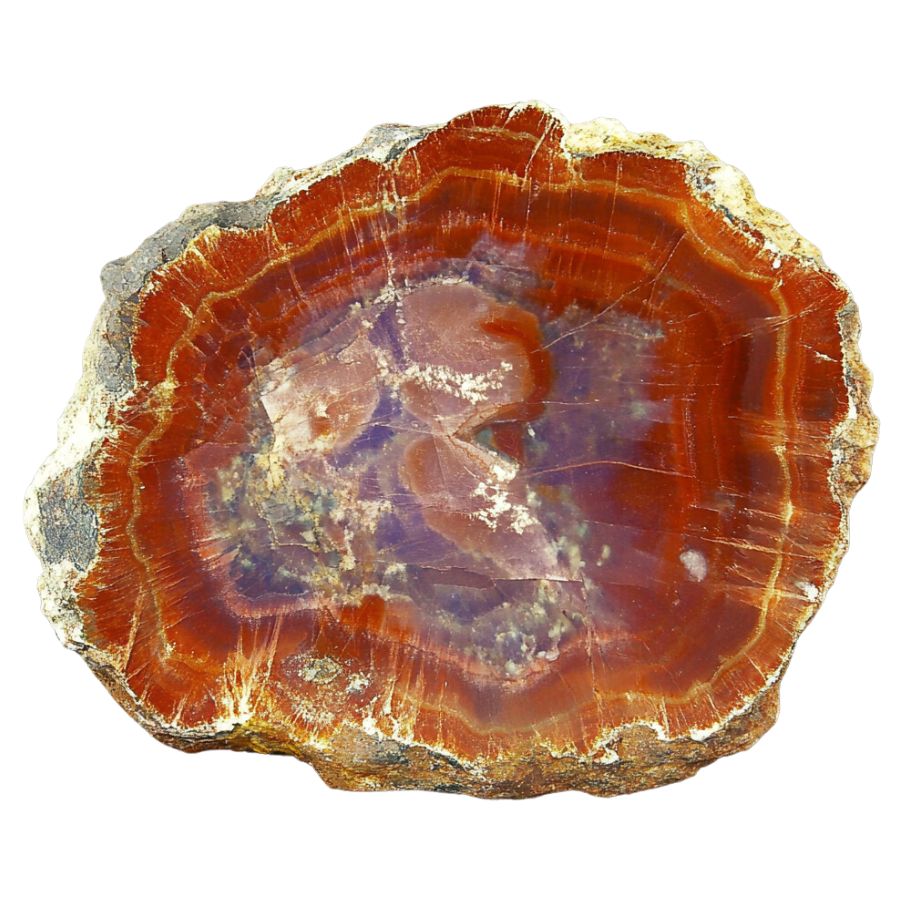
Found in the Petrified Forest National Park in Arizona, this is one of the most famous types of petrified wood. It comes from an extinct species of conifer. As Arizona’s state fossil, Araucarioxylon holds a special place in the state’s natural history.
These trees once formed vast forests during the Late Triassic period, about 225 million years ago. The vibrant colors in this petrified wood come from minerals that replaced the original tree material over time.
Metasequoia
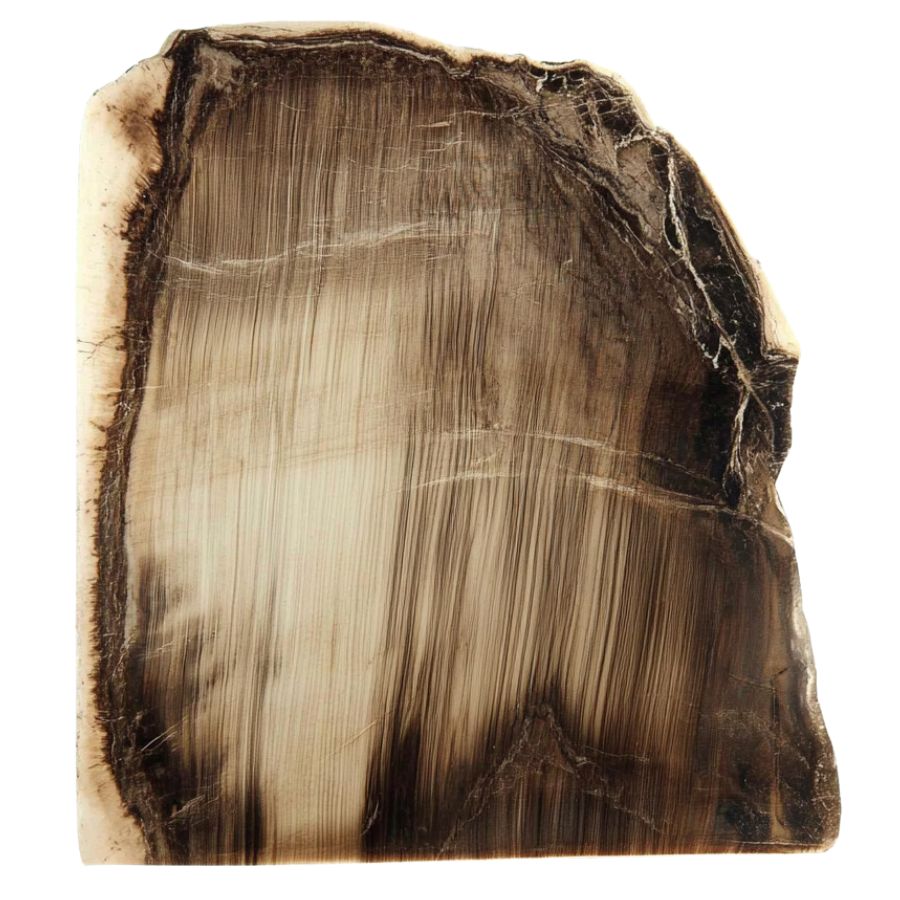
Often referred to as dawn redwood, this type of petrified wood can be found in various parts of the U.S., including the Pacific Northwest. Metasequoia was once thought to be extinct until living trees were later discovered in China.
Furthermore, its fine grain and reddish-brown color are characteristic features.
Palmoxylon
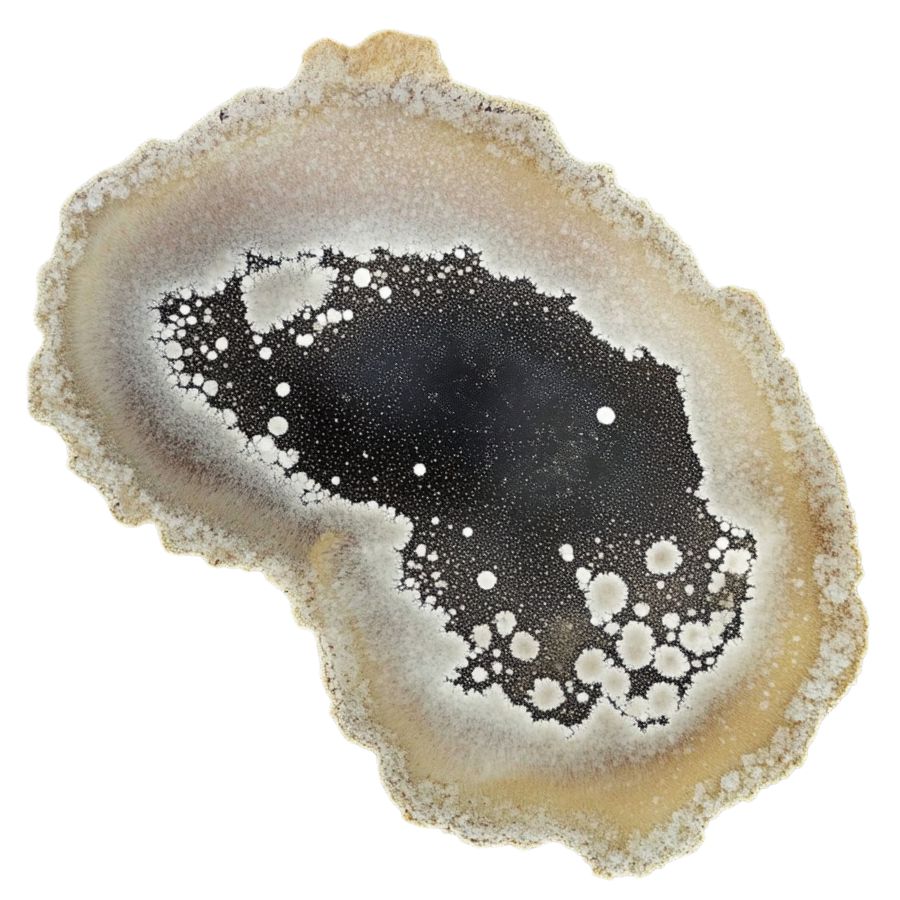
This petrified wood originates from palm trees and is often found in the Gulf Coast states like Texas and Louisiana. Recognized as the state stone of Texas, Palmoxylon is abundant and holds cultural significance.
The wood’s unique speckled or dotted pattern comes from the vascular bundles of the original palm tree. These fossils date back to the Cretaceous period, when the area was tropical and teeming with life.
Taxodium
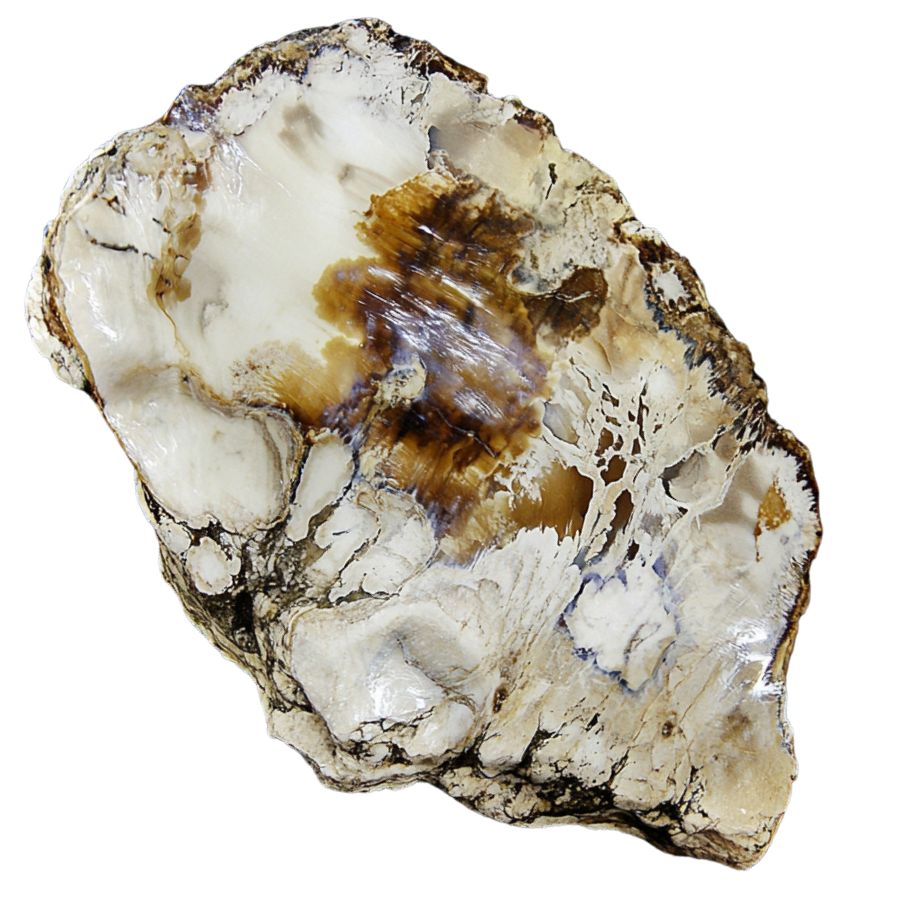
Also known as bald cypress, this petrified wood can be found in the southeastern U.S., particularly in areas that were once swampy. Taxodium wood is often found in places that were ancient swamps, where these trees thrived millions of years ago.
The wood is durable and shows intricate grain patterns, with growth rings and knotholes that tell the story of its long history. It’s a fascinating glimpse into the wet environments that once dominated the Southeast.
Sequoioxylon
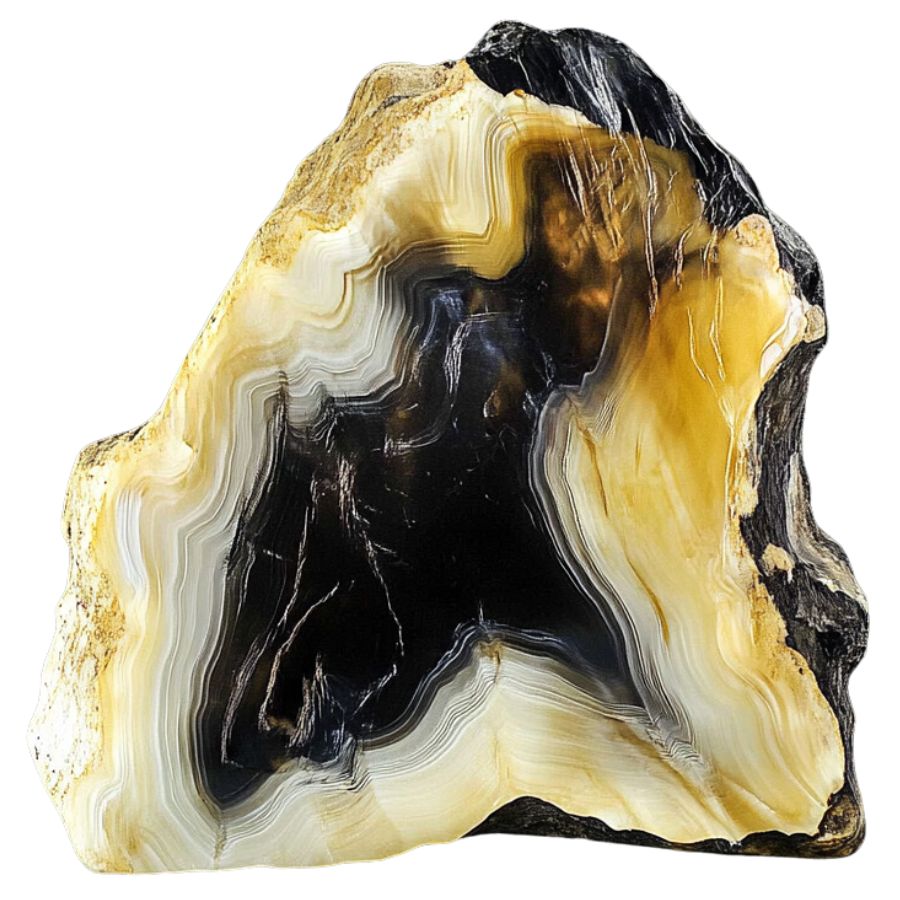
Petrified wood from ancient sequoia trees, found in places like California, where sequoia forests once thrived. These trees are the ancestors of the giant sequoias that still stand in California today.
The petrified wood is notable for its large, straight grain and reddish color, reflecting the immense size and age of the original trees.
Ginkgoxylon
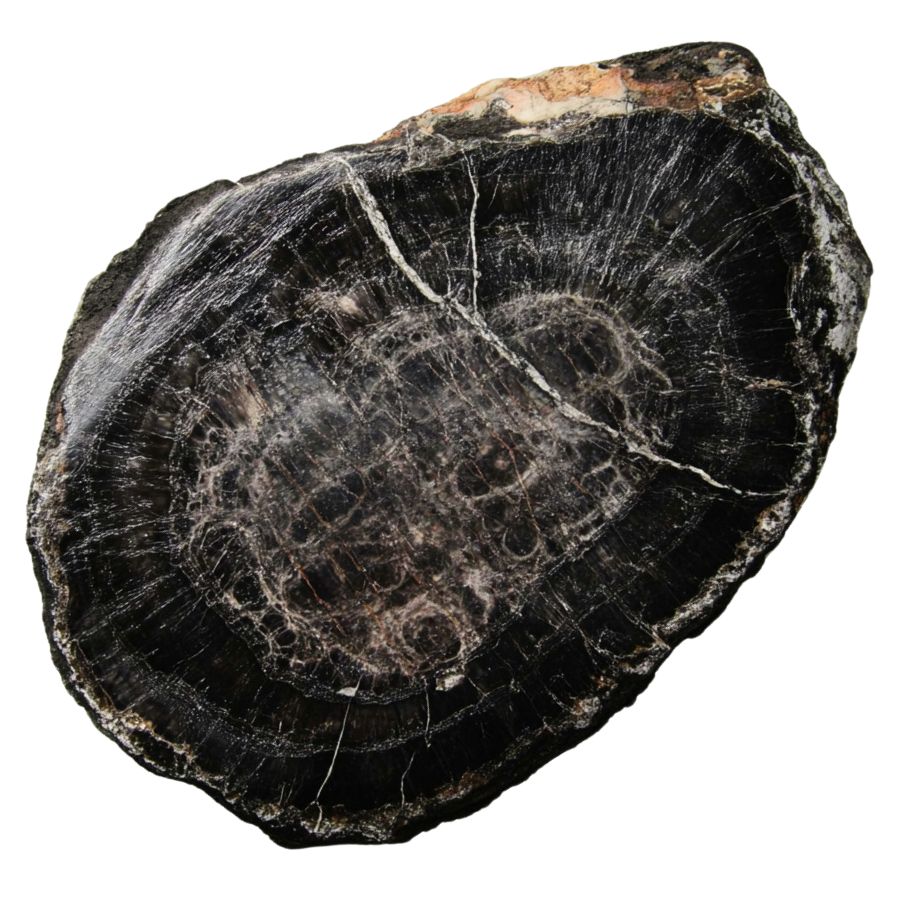
Petrified wood from ancient ginkgo trees, which can sometimes be found in states like Oregon and Washington. Ginkgo is one of the oldest tree species on Earth, with fossils dating back over 200 million years.
Ginkgo petrified wood often has a light color and may show patterns similar to the fan-shaped leaves of the living ginkgo.
Dicotyledonous Wood
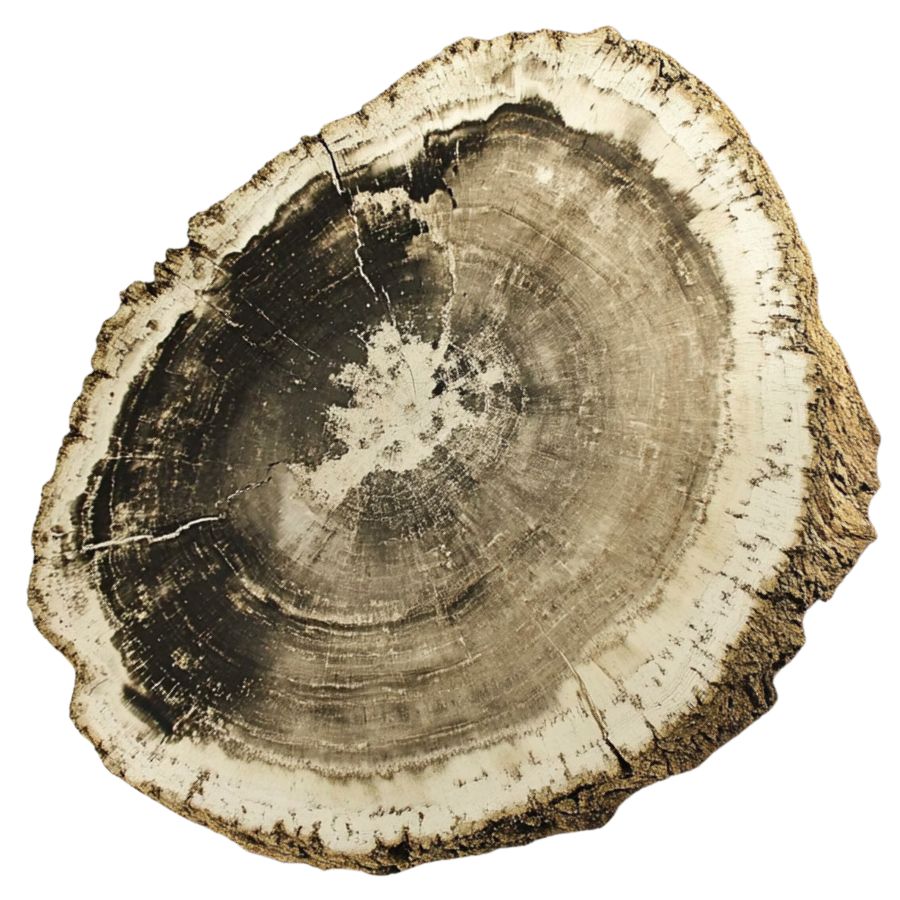
Found across various states, this type of petrified wood comes from broadleaf trees, making it more common and varied in appearance. You can spot dicotyledonous wood by the distinct vessels and growth rings that indicate seasonal changes.
This type of petrified wood is often found in regions that were once temperate forests, offering clues about the diverse plant life that existed millions of years ago.
Piceoxylon
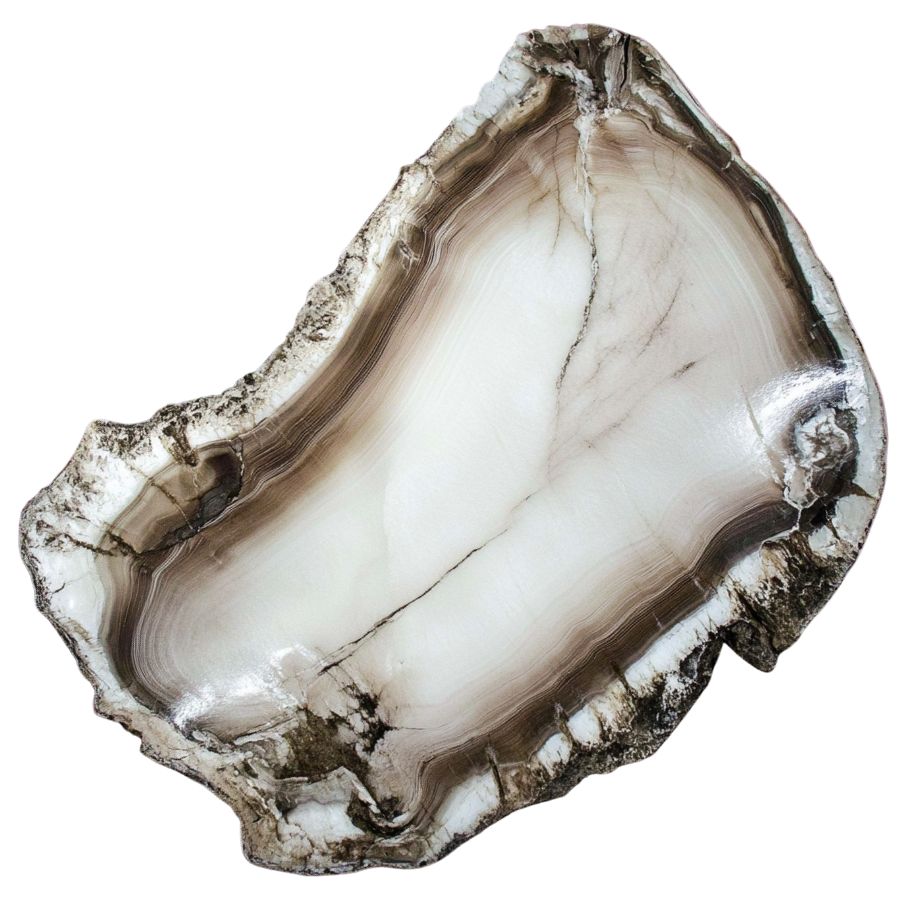
Petrified wood from ancient spruce trees, commonly found in areas like Wyoming and Montana, where coniferous forests once thrived. Piceoxylon is known for its straight grain and pale color, often showing growth rings that tell the tree’s life story.
These trees were part of the ancient boreal forests that covered large parts of North America during cooler periods.
A Quick Request About Collecting
Always Confirm Access and Collection Rules!
Before heading out to any of the locations on our list you need to confirm access requirements and collection rules for both public and private locations directly with the location. We haven’t personally verified every location and the access requirements and collection rules often change without notice.
Many of the locations we mention will not allow collecting but are still great places for those who love to find beautiful rocks and minerals in the wild without keeping them. We also can’t guarantee you will find anything in these locations since they are constantly changing.
Always get updated information directly from the source ahead of time to ensure responsible rockhounding. If you want even more current options it’s always a good idea to contact local rock and mineral clubs and groups
What Rough Petrified Wood Looks Like
Most of the photos you find of petrified wood are pieces that have been cut and polished. That is certainly useful but isn’t super helpful once you are out in the field. This is what you should look out for once you start hunting:
Exteriors like this
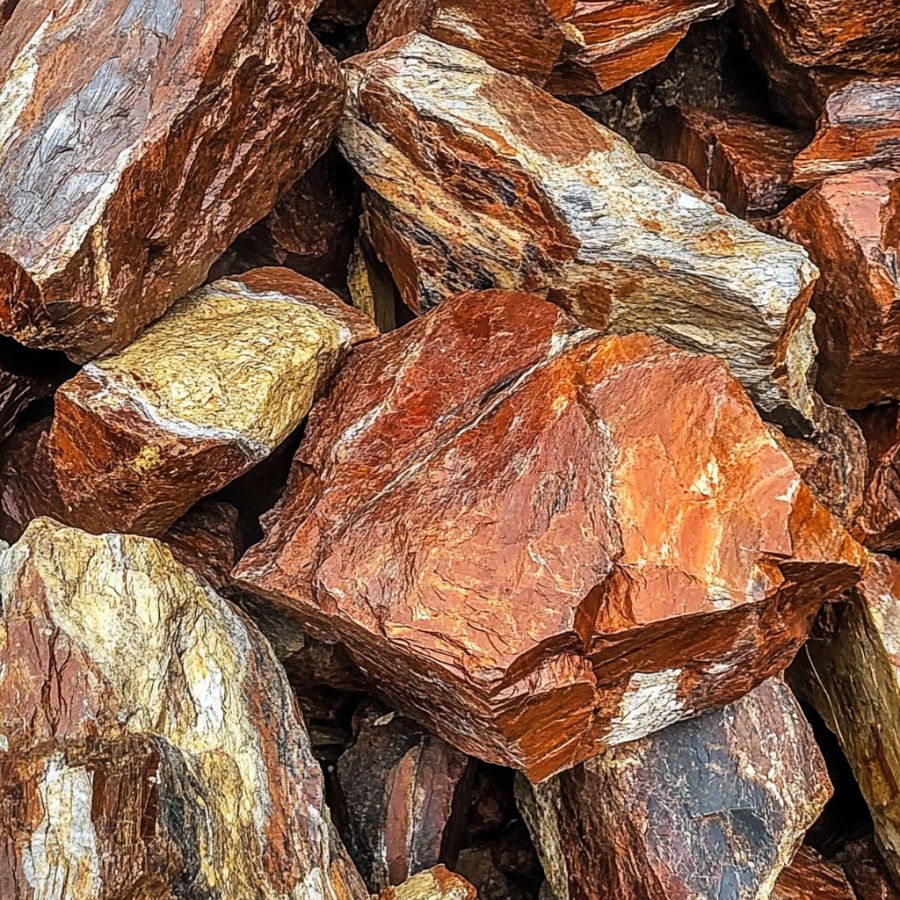
Every type of petrified wood has a different exterior and pattern but this is a good starting point on what to look for.
Texture and grain patterns
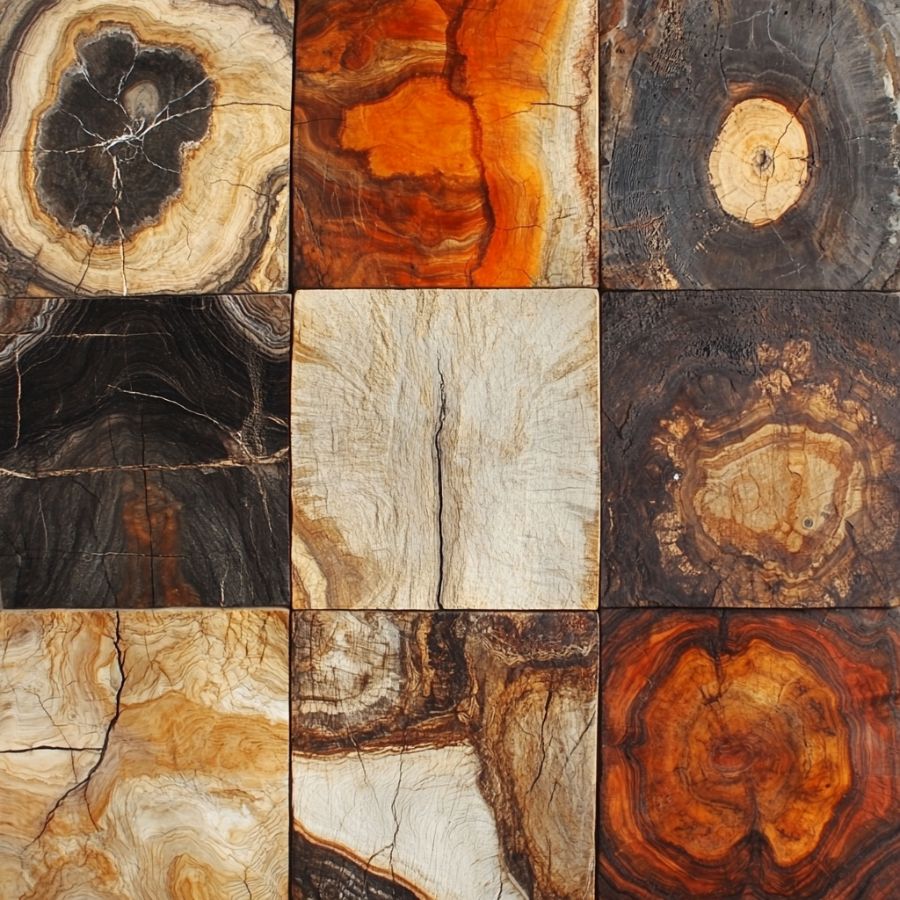
One of the most distinctive features to look for is the texture and grain patterns. Petrified wood often retains the original structure of the tree, including the grain, knots, and even growth rings. These patterns can appear similar to modern wood but are typically more rigid and fossilized.
Examine the surface for any linear patterns or striations that indicate the original wood grain. The texture may feel smoother or more polished in certain areas where mineralization has created a glassy effect.
Coloration and mineralization
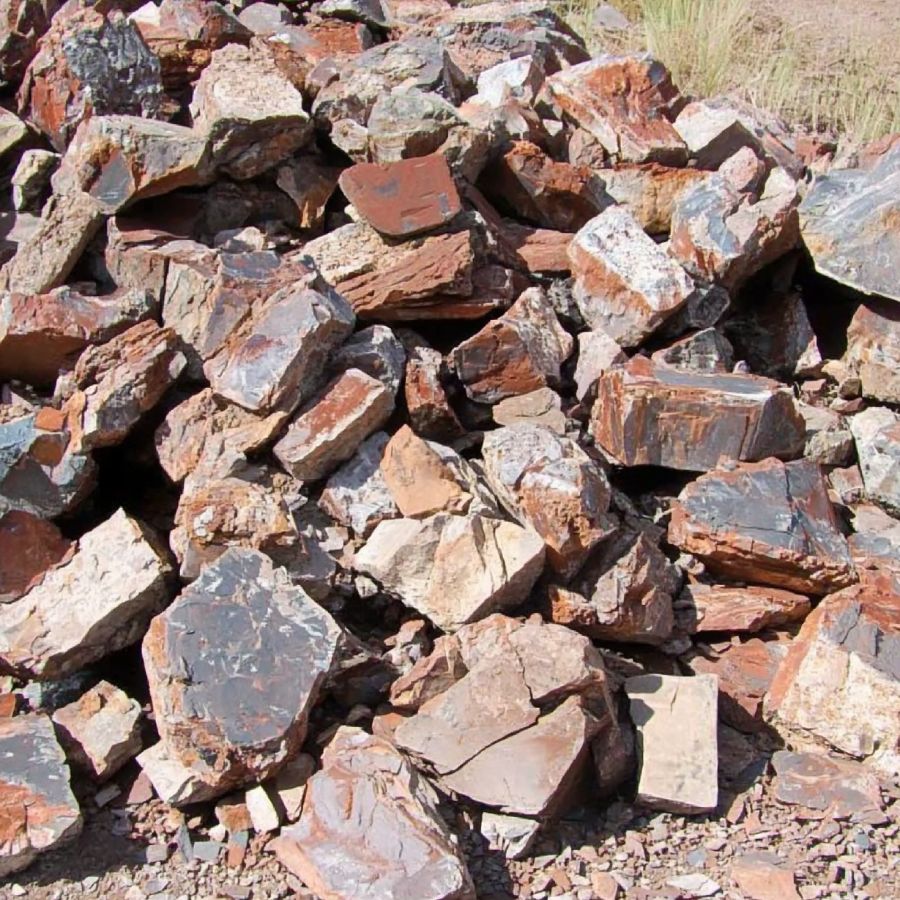
The color of petrified wood can vary significantly due to the minerals that replaced the organic material during the fossilization process. Common colors include shades of brown, red, yellow, orange, and black.
Some pieces might even exhibit multiple colors in intricate patterns. These colors are often more vivid and diverse than those found in regular rocks. When inspecting potential petrified wood, look for these distinct and varied hues, which can indicate the presence of different minerals such as silica, iron, manganese, and others that contributed to the petrification process.
Bark and exterior features

Another telltale sign of petrified wood is the presence of bark impressions or external textures that resemble tree bark. These features are often well-preserved and can include the rough, fibrous texture of bark, knots, or other surface irregularities typical of natural wood.
The exterior of rough petrified wood may also have a weathered appearance, with cracks and fractures that occurred as the wood fossilized over millions of years. Look closely for these natural wood features, as they can be a strong indicator that you have found a piece of petrified wood.
Weight and density
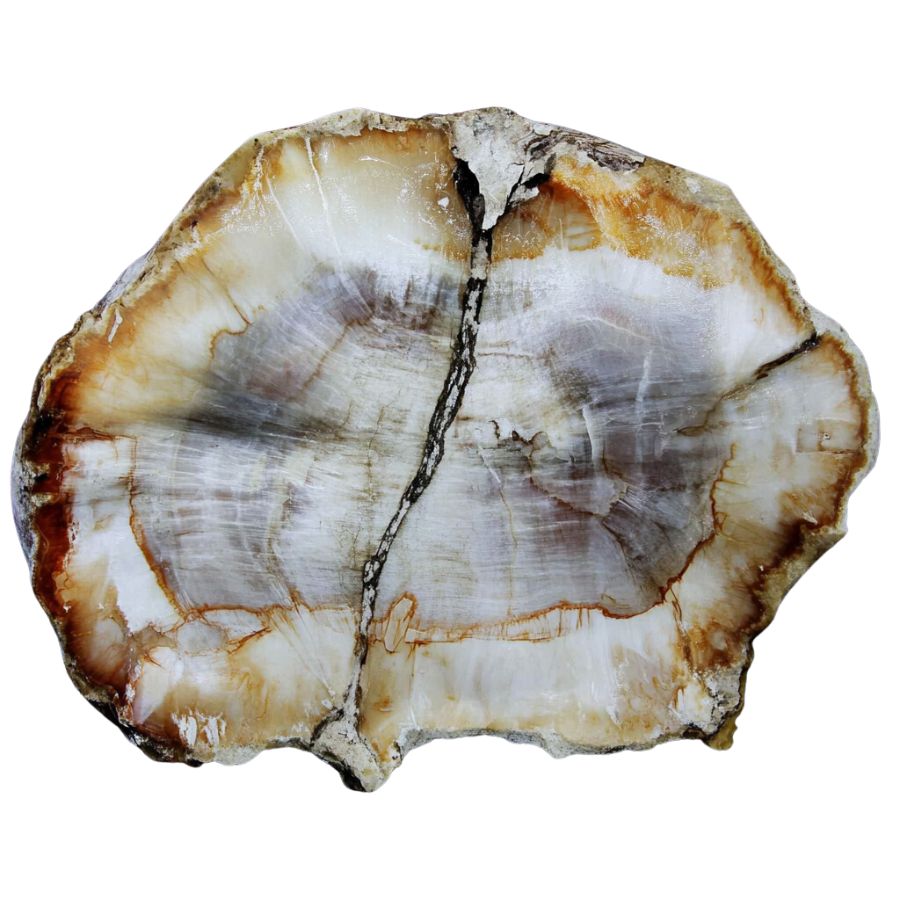
Petrified wood is typically much heavier and denser than regular wood due to the mineralization process. When rockhounding, pick up the specimen to feel its weight. Even small pieces of petrified wood will feel significantly heavier than an equivalent-sized piece of non-fossilized wood.
This increased density is due to the replacement of organic material with minerals, making petrified wood feel more like a rock than wood. Comparing the weight and density of your find with known samples of petrified wood can help confirm its authenticity.
- The extensive local experience of our team
- Input from a variety of local rockhounds and rockhound groups
- The difficulty in accessing a location
- Safety and potential hazards when collecting
- Private and public locations
- A desire to include locations for both the experienced and newbie hunters who are just starting out
Using these inputs we think we’ve put together the best list out there for those who love finding petrified wood for our collections!
General Areas To Try First
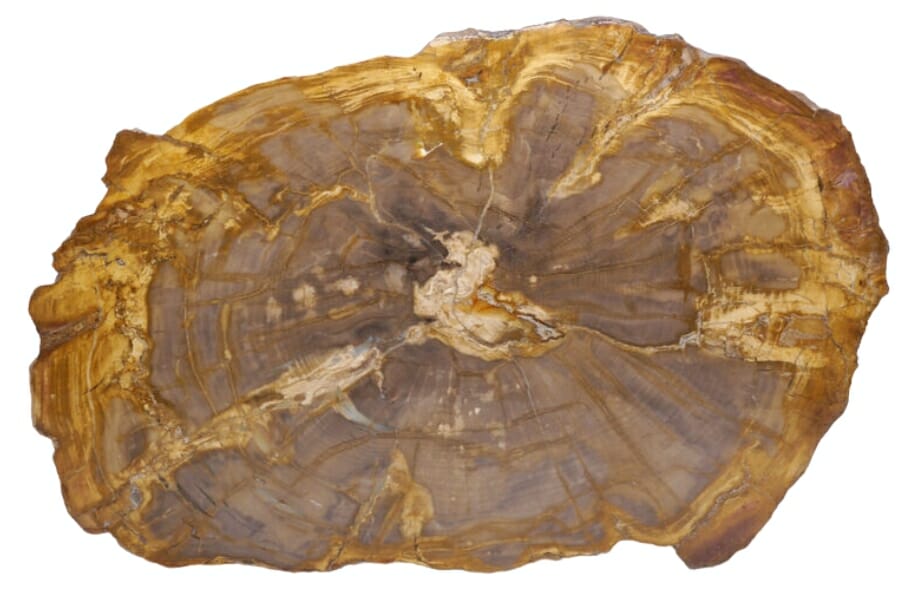
Before we get into the specific places you should be looking we wanted to give you some more general advice. Once you get to your hunting area you should head straight for these areas if you want to have the best results:
Lakeshores
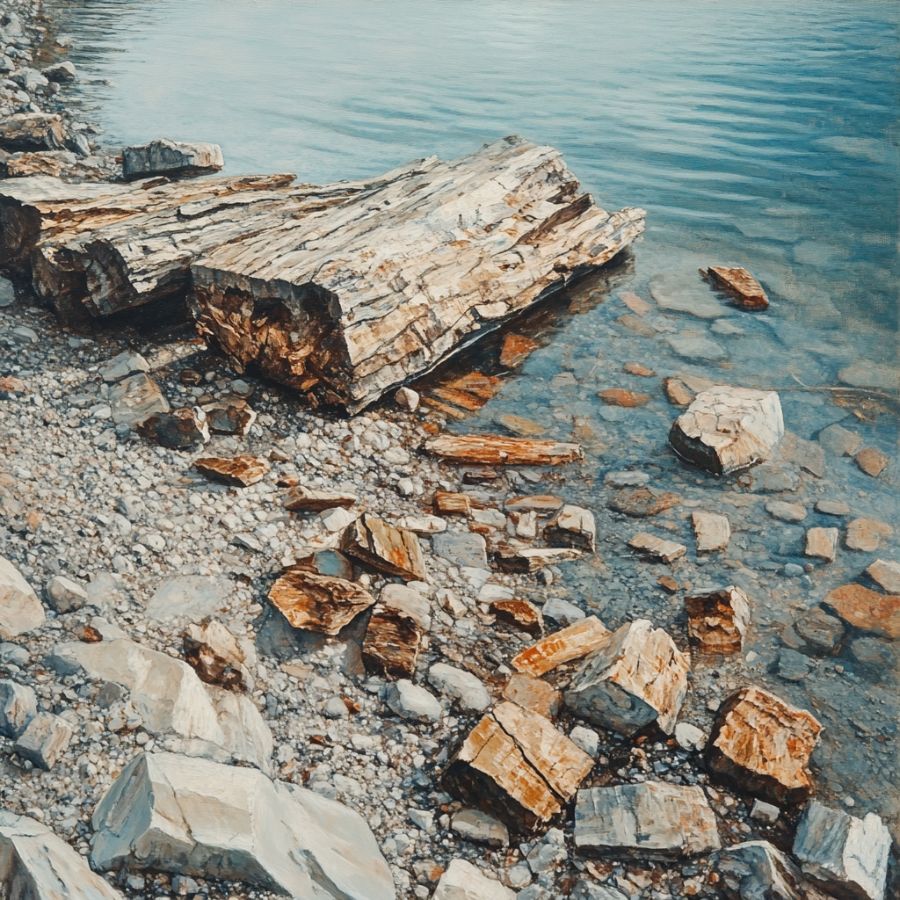
Lakeshores are like natural garbage cans because all things wash up and get left there over time. That includes wood that has turned to stone. As the water rises and falls, it carries sediment and rocks. It also takes the fossilized remains of trees from long ago.
Most lakeshores have a variety of rocks and minerals, which makes them an excellent place for petrified wood to grow and thrive. You’ll find a nice mix of sedimentary and volcanic rocks, the best sites for preserving wood fossils.
Roadcuts
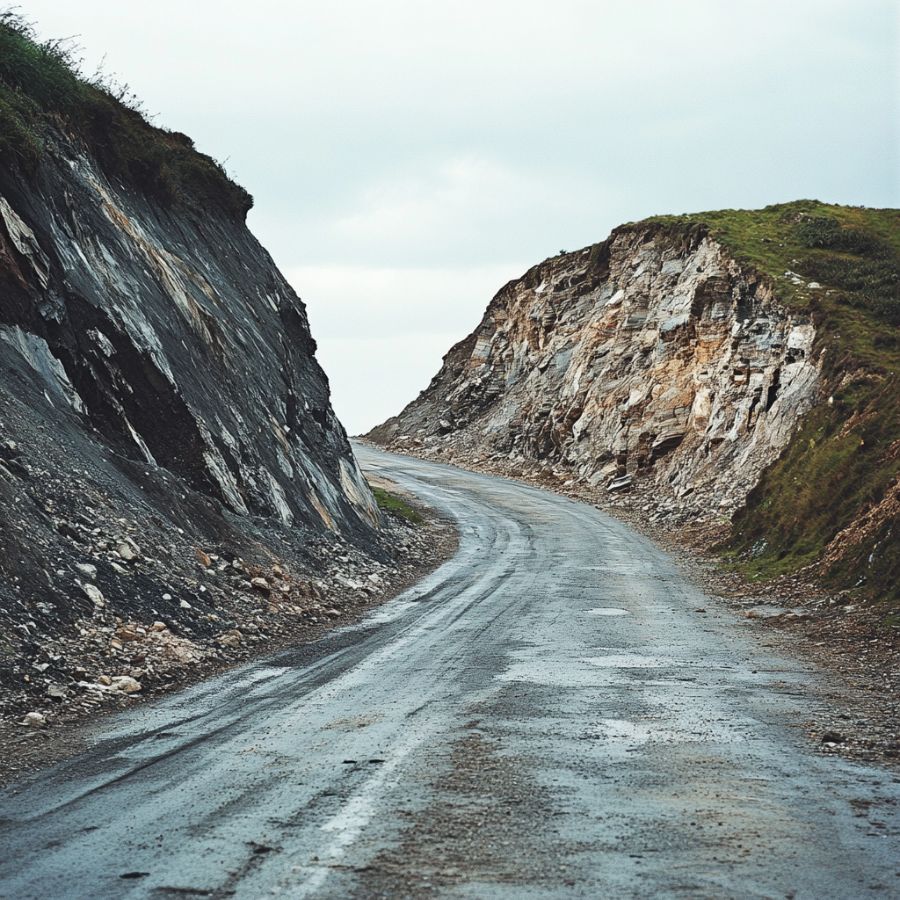
When building roads, parts of the ground are often cut away to make a smooth path. The magic happens when the road cuts through layers of rock and soil. Petrified wood is often buried deep underground, and roadcuts let us see these underground wonders.
As workers blast through the rock layers, they accidentally find petrified wood that has been there for hundreds of years. Petrified wood is easy for collectors to spot because the exposed rock layers of roadcuts make it easy to see its unique patterns and colors.
Streams and creeks
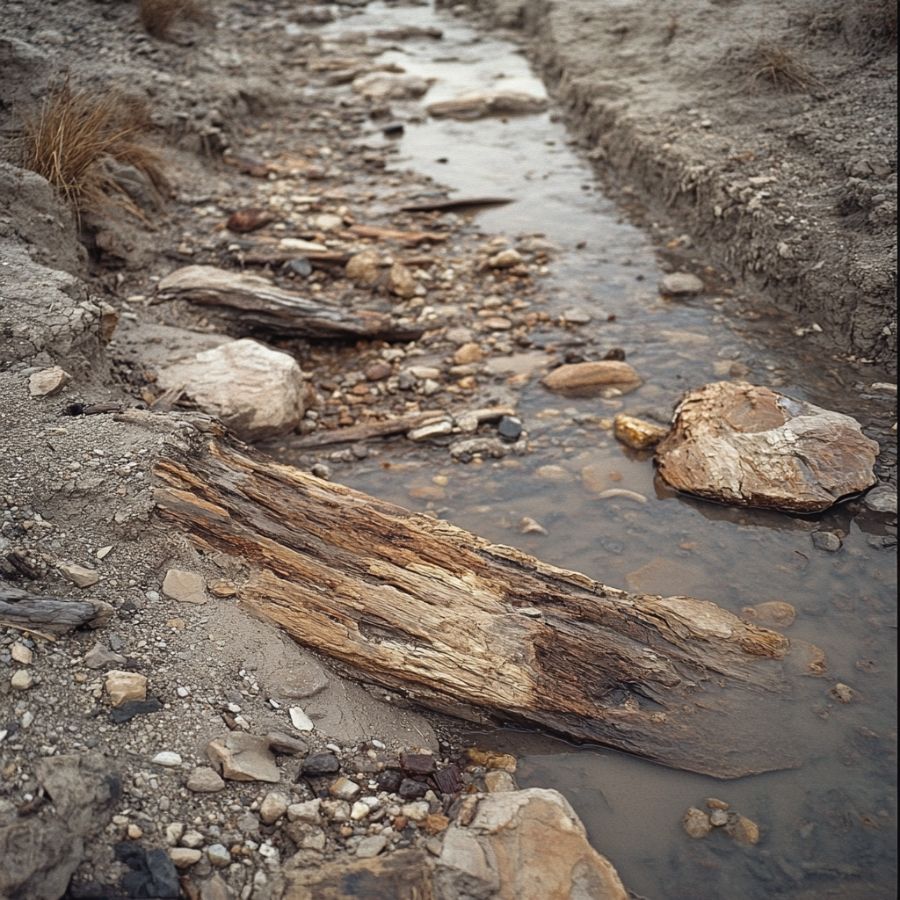
Streams and creeks can move loose sediment away, which can reveal old wood that has turned to stone. As the water moves around, it exposes small pieces or even more significant amounts of petrified wood that have settled on the streambed.
Streams and creeks are more accessible for collectors because they are not as big. You can easily walk along their banks, jump from rock to rock, and look for petrified wood at the water’s edge.
River beds
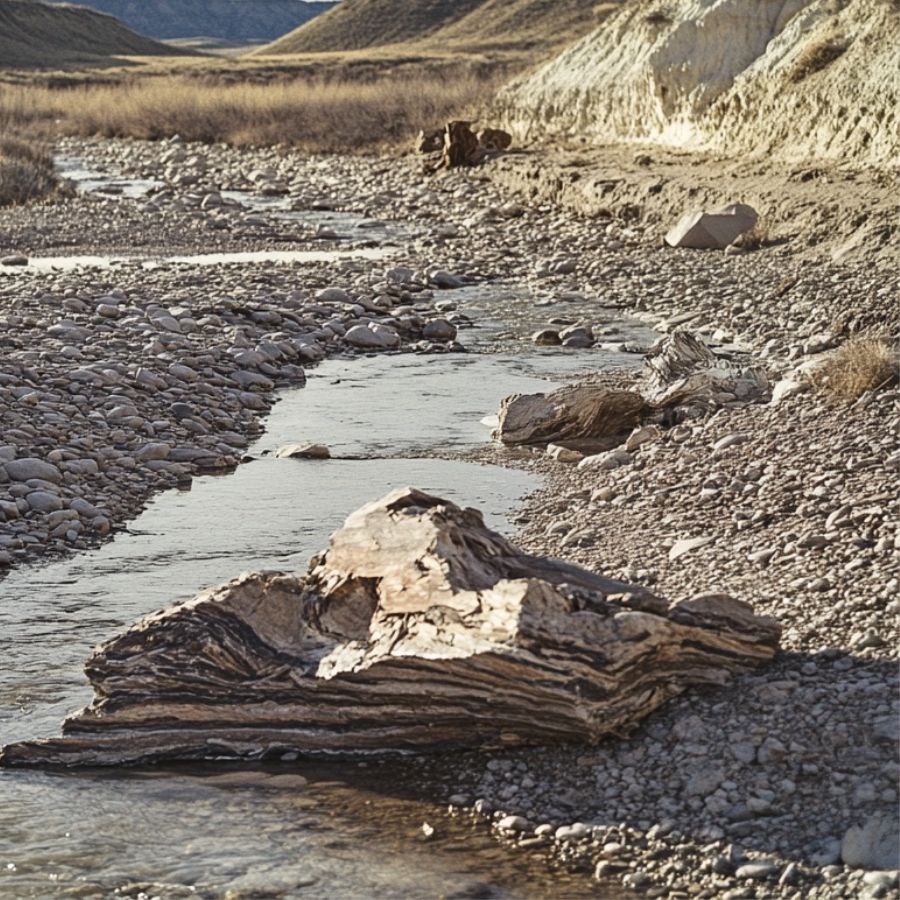
Riverbeds are excellent for finding petrified wood due to their unique geological and environmental conditions. Rapid burial by sediments like sand, silt, and mud protects fallen trees from decay, initiating the fossilization process.
Mineral-rich waters flowing through rivers facilitate the replacement of organic material with minerals such as silica, turning wood into stone. Over time, erosion exposes these buried treasures, making them accessible for discovery.
This dynamic environment, with constant sediment deposition and mineral infiltration, creates ideal conditions for the formation and eventual exposure of petrified wood.
The Best Locations For Finding Petrified Wood in Alaska
Exploring the top places in the state can significantly boost your chances of finding crystals. By focusing your search on these well-regarded locations, you’ll be well on your way to uncovering some of the state’s hidden gems.
DON'T MISS OUT ON ANY GREAT FINDS!
While you're out searching for Petrified Wood you're going to find A LOT of other interesting rocks and minerals along the way. The last thing you want to do is toss out something really interesting or valuable. It can be easy to misidentify things without a little guidance.
We've put together a fantastic field guide that makes identifying 140 of the most interesting and valuable rocks and minerals you will find REALLY EASY. It's simple to use, really durable, and will allow you to identify just about any rock and mineral you come across. Make sure you bring it along on your hunt!
Unga Island

Unga Island, located in the Shumagin Islands of Alaska, is situated in the northern Aleutians, this island features a remarkable petrified forest along its northwest coast.
The forest consists of ancient sequoia and metasequoia trees that were buried by volcanic activity during the Tertiary Period. You can explore a four-mile stretch of the intertidal zone at low tide, where the petrified stumps and logs are exposed.
Some stumps measure up to 9 feet in diameter, while logs can exceed 15 feet in length, showcasing the impressive remnants of this prehistoric forest.
Unga Island’s geological history and its location within the Alaska Maritime National Wildlife Refuge make it a significant site for both scientific study and gemstone enthusiasts.
Carter Creek

Tucked away in the remote North Slope region of Alaska, Carter Creek is a prime destination for rockhounds seeking petrified wood.
This creek, located in the sparsely populated North Slope Borough, winds through a landscape dominated by tundra and ancient sedimentary rocks.
The creek is part of the geologically significant Colville Basin and Foldbelt Basin, which have yielded a diverse array of minerals and fossils over the years.
The presence of calcite, chert, and other unique geological features in the area suggests a fascinating history of sediment deposition and mineralization – perfect conditions for the formation of petrified wood.
Explorers of Carter Creek should focus their search along the creek beds, gravel bars, and exposed sedimentary layers, where erosion has uncovered ancient plant matter turned to stone over millions of years.
Nonvianuk Lake

Nonvianuk Lake, located in the southern part of the Alaska Peninsula, is a hidden gem for gemstone enthusiasts. This pristine lake lies approximately 20 miles south of Iliamna Lake and is surrounded by Katmai National Park.
Known for its unique geological features, the area is rich in volcanic ash and pumice, which play a crucial role in the preservation of petrified wood.
Rockhounds can find petrified wood along the gravels and shores of Nonvianuk Lake. The combination of volcanic activity and erosion exposes these fascinating specimens, making the lake a prime spot for discovery.
The diverse landscape, with its rugged terrain and remote beauty, adds to the allure of this location.
Pedro Dome Creek

Pedro Dome Creek is located about 15 miles northeast of Fairbanks, Alaska, nestled in the Yukon-Tanana Uplands. This mountainous region is steeped in history, particularly known for its gold mining heritage dating back to the early 1900s.
The geological landscape of Pedro Dome is rich and diverse, featuring ancient riverbeds and gravel deposits that contribute to its unique mineral offerings.
To discover this fascinating gemstone, search in the gravels and creek beds, where erosion has revealed pieces of this ancient wood.
The combination of historical significance and geological richness makes Pedro Dome Creek a prime location for gemstone hunters seeking petrified wood.
Chickaloon Formation

The Chickaloon Formation, located in the Matanuska Valley of south-central Alaska, is a prime destination for petrified wood enthusiasts.
This Paleocene-Eocene sedimentary rock formation, dating back 56-66 million years, is known for its diverse lithology, including shales, sandstones, conglomerates, and abundant coal deposits.
One of the most fascinating aspects of the Chickaloon Formation is the presence of well-preserved leaf fossils, providing a glimpse into the lush, ice-free forests that once covered the region during the early Eocene Epoch.
Petrified wood can be found in creeks, gravels, and exposed sedimentary layers throughout the formation, making it an exciting prospect for rockhounding and fossil hunting.
The Chickaloon Formation’s unique geological history, with its interbedded sedimentary rocks and coal beds, offers a rich tapestry of petrified wood and other fossilized plant remains for collectors and researchers alike.
Our Other Favorite Places For Petrified Wood
After discussing our top picks, we wanted to discuss the other places on our list. Below is a list of the additional locations where we have succeeded, along with a breakdown of each place by county.
| Borough | Location |
| Aleutians West Census Area | Atka Island |
| Lake and Peninsula | gravels around Kujulik Bay |
| Kenai Peninsula | Kenai River |
| Matanuska-Susitna | Matanuska River |
| Kenai Peninsula | Anchor River |
| Petersburg | in beach gravels of Glacier Bay and Hamilton Bay |
Always Confirm Access and Collection Rules!
Before heading out to any of the locations on our list you need to confirm access requirements and collection rules for both public and private locations directly with the location. We haven’t personally verified every location and the access requirements and collection rules often change without notice.
Many of the locations we mention will not allow collecting but are still great places for those who love to find beautiful rocks and minerals in the wild without keeping them. We also can’t guarantee you will find anything in these locations since they are constantly changing.
Always get updated information directly from the source ahead of time to ensure responsible rockhounding. If you want even more current options it’s always a good idea to contact local rock and mineral clubs and groups


